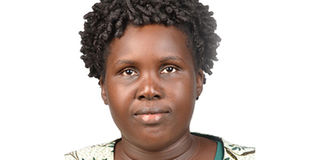Prime
Teenage Pregnancies in Uganda: A governance issue

Apio Christine
What you need to know:
Involve young people in developing evidence and research driven policies and programmes.
About a year ago, I read a disturbing piece of news. It was an online news publication on the rate of teenage pregnancies in Lira District. The statistic was shocking, the headline was chilling. “Over 15,094 teenage pregnancies recorded in Lira district in two years-data shows.” That was the headline. Terrifying, isn’t it?
Article 129 (1) of the 2007 Penal Code Amendment Act states that: Any person who performs a sexual act with another person who is below the age of 18 years, commits defilement and is liable to life imprisonment upon conviction. Despite this constitutional provision, the 2016 Uganda Demographic and Health Survey reveals that about 49 per cent of women, aged 15-19 years, had either begun childbearing, had a live birth, or were pregnant with their first child. According to Uganda Bureau of Statistics (2018), one in four women had given birth by the age of 18. This is too high a number. Teenage pregnancies are not limited to Lango sub-region alone, but transcend borders of several districts in the country.
With the advent of Covid-19 pandemic, teenage pregnancy has reached a crisis phase in the country. Closure of schools, movement restrictions associated with lock down measures taken by the government to control spread of infections have put more girls at risk of sexual violence, child marriage and sexual exploitation and abuse. Teenage pregnancy, if urgently not addressed will undermine girls’ abilities to realize full potentials, further posing dire health, social and economic consequences for the country. Every government that cares about fighting poverty and inequality must be genuinely concerned about this trend and must take action now.
Teenage pregnancies are often linked to domestic violence, primitive cultural practices, alcoholism and poor parenting. This may or may not be true.
Anecdotal evidence shows that the pressure girls face to marry and bear children early, limited educational prospects, sexual violence and barriers to accessing reproductive health information and services due to restrictive laws and policies are responsible for teenage pregnancies. Therefore, evidence based and data driven policies and programmes would be more effective. The process of designing and developing strategies on teenage pregnancy is as important as the strategy itself.
When we assume that organisations working on these issues represents the voice, interest and priorities of girls we underestimate the potential, ability and agency of girls to design solutions to issues affecting them.
In April 2021, Parliament passed a motion intended to push government to act on the commitments made to protect the rights of women and girls. It urged government to develop and enforce policies to protect girls against teenage pregnancy and child marriage and implement existing laws against gender-based violence.
Adopting a “Whole of Society” Approach is critical to ensuring everyone is involved. Girls must be at the table to design strategies and programmes on teenage pregnancies in order to give them the voice and visibility to negotiate priorities and actions, ensuring they are not left behind. This motion must be followed by urgent action if the situation is to be reversed. Government must;
•Involve young people in developing and implementing evidence and research driven policies and programmes.
•Ensure access to sexual and reproductive health information and services for adolescent girls, including implementation of a comprehensive sexuality education in schools.
•Enforce policies that promotes the enrollment and retention of girls in schools.
•Prosecute offenders who defiles girls as provided for in the constitution.
•Invest in poverty reduction programmes for poor girls and their families we see during U.S presidential elections.
By Christine Apio




